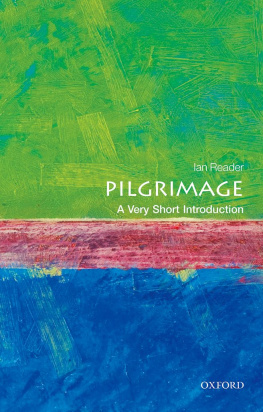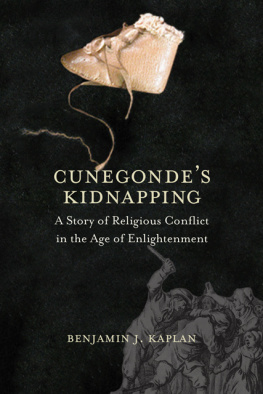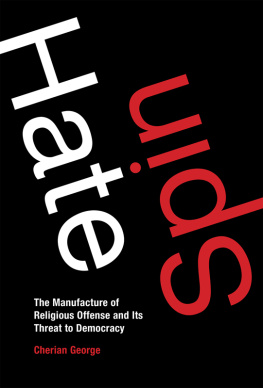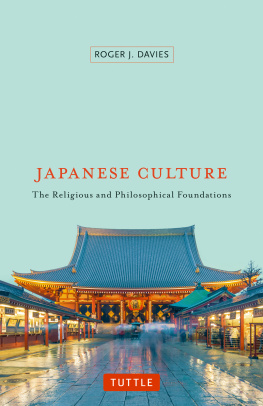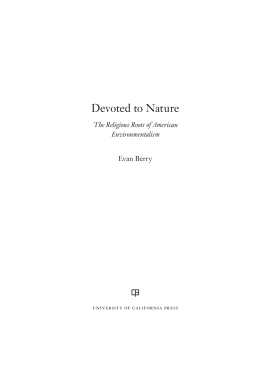RELIGIOUS VIOLENCE IN CONTEMPORARY JAPAN
NORDIC INSTITUTE OF ASIAN STUDIES
Recent Monographs
67. ISLAM AND POLITICS IN AFGHANISTAN
Asta Olesen
68. EXEMPLARY CENTRE, ADMINISTRATIVE PERIPHERY
Hans Antlv
69. FISHING VILLAGES IN TOKUGAWA JAPAN
Arne Kalland
70. THE HONG MERCHANTS OF CANTON
Weng Eang Cheong
71. ASIAN ENTREPRENEURIAL MINORITIES
Christine Dobbin
72. ORGANISING WOMENS PROTEST
Eldrid Mageli
73. THE ORAL TRADITION OF YANGZHOU STORYTELLING
Vibeke Brdahl
74. ACCEPTING POPULATION CONTROL
Cecilia Nathansen Milwertz
75. MANAGING MARITAL DISPUTES IN MALAYSIA
Sharifah Zaleha Syed Hassan and Sven Cederroth
76. SUBUD AND THE JAVANESE MYSTICAL TRADITION
Antoon Geels
77. FOLK TALES FROM KAMMU VI: A STORY-TELLERS LAST TALES
Kristina Lindell, Jan-jvind Swahn and Damrong Tayanin
78. KINSHIP, HONOUR AND MONEY IN RURAL PAKISTAN
Alain Lefebvre
79. THAILAND AND THE SOUTHEAST ASIAN NETWORKS OF THE VIETNAMESE REVOLUTION, 18851954
Christopher E. Goscha
80. INDIAN ART WORLDS IN CONTENTION
Helle Bundgaard
81. CONSTRUCTING THE COLONIAL ENCOUNTER
Niels Brimnes
82. RELIGIOUS VIOLENCE IN CONTEMPORARY JAPAN
Ian Reader
83. MONGOLIAN NOMADIC SOCIETY
Bat-Ochir Bold
84. INDIGENOUS PEOPLES AND ETHNIC MINORITIES OF PAKISTAN
Shaheen Sardar Ali and Javaid Rehman
85. LEE KUAN YEW: THE BELIEFS BEHIND THE MAN
Michael D. Barr
86. LANGUAGE PLANNING AND LANGUAGE CHANGE IN JAPAN
Tessa Carroll
The Nordic Institute of Asian Studies (NIAS) is funded by the governments of Denmark. Finland, Iceland, Norway and Sweden via the Nordic Council, of Ministers, and works to encourage and support Asian studies in the Nordic countries. In so doing, NIAS has published well in excess of one hundred books in the last three decades.
Religious Violence in Contemporary Japan
The Case of Aum Shinriky
IAN READER
CURZON
Nordic Institute of Asian Studies
Monograph Series, No. 82
First published in 2000
by Curzon Press
Richmond, Surrey
Ian Reader 2000
British Library Catalogue in Publication Data
Reader, Ian
Religious violence in contemporary Japan : the case of Aum Shinrikyo. - (NIAS monographs ; 82)
1. Oumu Shinrikyo (Religious organization) 2. Cults - Japan
I. Title
299.56
ISBN 0-7007-1108-2 (cloth)
ISBN 0-7007-1109-0 (paperback)
Cover/jacket concept: The Japanese script on the cover, with three terms written vertically from right to left, indicates the words shi (death), samadhi (enlightenment) and shinri (truth). Aum equated shi and samadhi, using the Japanese phonetics for samadhi in conjunction with the ideogram for shi. Shinn was also part of the title of Aum Shinriky and was used to signify that the movement considered itself and absolute truth as being synonymous.
For Philip
Contents
This book would not have been possible without the help, encouragement and support of many people over the past four and a half years since the Tokyo subway attack brought Aum Shinriky to world attention and triggered off my research into the movement. My colleagues at the Nordic Institute of Asian Studies (NIAS) in Copenhagen, where I was based during 19951998, deserve my thanks for their support. NIAS also provided me with some research funds out of its restricted budget to support a number of visits to Japan in 19961998 to collect material for this book and to conduct the interviews mentioned in it. I would like to thank the Directors of NIAS, Thommy Svensson and Robert Cribb, for their help and support. Gerald Jackson, Editor in Chief at NIAS, was instrumental in getting this project going, encouraging me to turn a long paper I wrote on Aum in late 1995 into the short book, A Poisonous Cocktail, that I wrote in early 1996 as a research report. Subsequently he encouraged me to develop the work further, and was instrumental in persuading me to produce this book. The rest of the publishing and editorial team at NIAS: Liz. Bramsen, Leena Hskuldsson, Janice Leon, and Andrea Straub have all played their part in bringing this book to completion.
I would like also to thank the Japan Foundation Endowment Committee (JFEC) of the United Kingdom for their support at the beginning of the research that led to this book. I was in possession of a grant (No. 843) from the JFEC to visit Japan and research a different topic when the Aum affair exploded in spring 1995. The JFEC readily agreed, through the secretary John Hawthorne, to permit me to use some of the time I was to spend in Japan not on the topic for which the money was granted but on studying Aum. This initial help in effect seed-funded the project that has materialised in this book.
I am extremely fortunate in having as academic colleagues many people whom I would more accurately describe as friends, and to these I owe many debts and thanks. I wish to thank Shimazono Susumu from the University of Tokyo for his friendship and assistance, his kind and pertinent critiques of my work, and his willingness to discuss the affair in a series of conversations and meetings that have taken place in Tokyo, Copenhagen and the USA even during a memorable visit together to Memphis, Tennessee where, while acting as pilgrims visiting cultural centres of special importance (for me, Graceland, the home of Elvis Presley, for him, Beale Street, the home of the Blues), we continued to discuss Aum. Robert Kisala of Nanzan University has answered many questions, provided feedback to many of my thoughts and ideas, and has been extremely generous in passing on to me the transcript of an interview he carried out with a former Aum member, and much other information about Aum. Mark Mullins of Meiji Gakuin University has also been most encouraging and has provided me with information and engaged me in fruitful discussions. Kisala and Mullins, who have both been generous with comments on this manuscript, are also editing a book on the repercussions and aftermath of the Aum affair, a book that will deal with areas that the present book is unable to deal with at any length. Paul Swanson, also of Nanzan University, is to be thanked for providing me with information in the earlier part of the affair and for his perceptive comments about the logistical meanings of the Tokyo attack. Watanabe Manabu of Nanzan University was especially helpful in providing me with Aum and Aum-related publications and information. Others who have been valuable sources of materials and information have been Takeda Michio and Hoshino Eiki of Taish University, Kashioka Tomihide, now of Kyoto Womens University, Ben Dorman, at the time a postgraduate student working at Nanzan and now at Tokyo University, and Maekawa Michiko, a postgraduate student at Tokyo University. Two doctoral students of mine, Jay Sakashita and Clark Chilson, have also been generous with information and with comments and discussions of the affair. I have benefited from various discussions with Robert Jay Lifton, who has conducted interviews with former Aum members and has worked on aspects of the affair, and have learnt much from his insights. George Tanabe of the University of Hawaii deserves my thanks for his friendship and understanding over my absences from the mutual book project (since completed) that we were working on so that I could conduct my Aum research. His intellectual stimulus and advice have contributed greatly to my wider knowledge of the world of religion and of Japan.
I would like to thank several institutions and colleagues for inviting me to speak and present papers on various aspects of Aum and its uses of violence. These opportunities have enabled me both to test out my ideas and to gain critical feedback from audiences. In particular, 1 thank Jackie Stone, Bob Sharf and Sharon Minichiello, who were responsible for invitations to present aspects of my research on Aum at seminars at the universities of Princeton, Michigan and Hawaii respectively.
Next page

